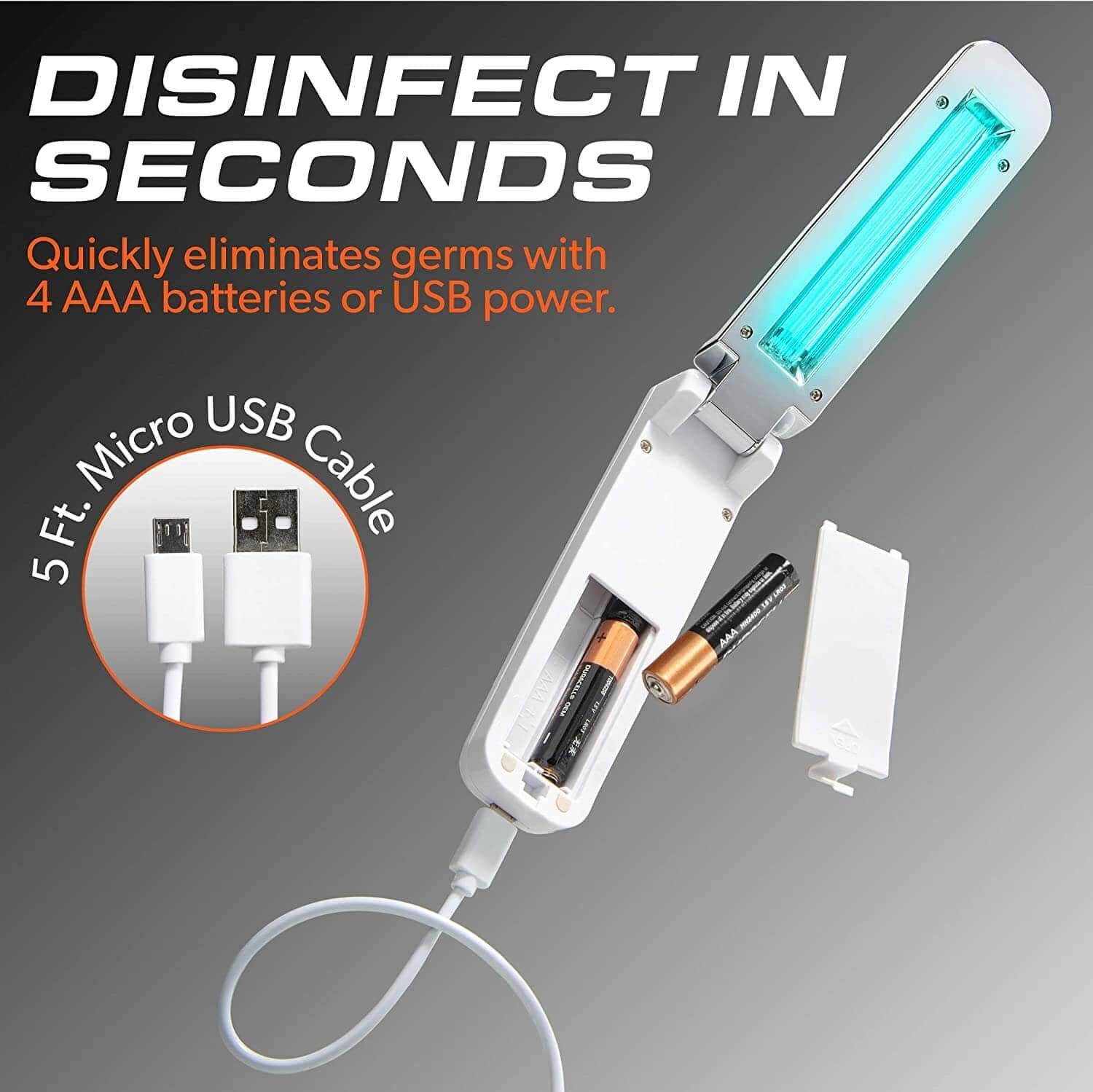

#Uvc light sanitizer wand skin#
Exposure can result in skin irritation, damage, or burns. Remember, most types of UV light can be harmful to people. While a UV lamp may be used to disinfect surfaces, avoid using one to kill the new coronavirus on your hands or other parts of your body. Myth #2: Using a UV lamp on your body can protect you from COVID-19 Perhaps more importantly, prolonged exposure can also lead to skin damage, sunburn, or even skin cancer. These types of UV light are less effective at killing SARS-CoV-2. While sunlight does contain UV light, it’s mostly UVA and UVB light. Myth #1: Sun exposure can protect you from COVID-19 Let’s take a closer look at some popular myths and why they could be potentially dangerous, as well as the safest known ways to prevent COVID-19. You may have heard about some methods to kill the new coronavirus using UV light or high temperatures. Myths regarding the use of UV light and temperature However, further safety studies are needed. Research has indicated that, unlike other types of UVC light, it doesn’t appear to penetrate the outer layers of the skin or eye. It’s possible that prolonged exposure to UVC light can cause materials like textiles, plastics, or polymers to degrade.įar-UVC light may be a potentially safer option for disinfection.UVC light lamps can potentially contain mercury or produce ozone, both of which can be harmful to humans.That means it may take a longer time to kill germs. The types of UVC light lamps sold for at-home use are often lower in intensity.Exposure to some types of UVC light can damage your skin or eyes.The optimal length of exposure, wavelength, and dose of UVC light for killing SARS-CoV-2 is yet to be determined.While UVC light can quickly kill SARS-CoV-2, the Food and Drug Administration (FDA) notes some additional risks for using it at home: That means that if an area is in shadow or covered by dust, UVC light will be less effective at killing germs that may be present. One of the downsides to UVC light is that it needs direct contact to be helpful. Due to the fact that it presents less of a health hazard, far-UVC may be a good option for disinfection. UVC light can effectively kill SARS-CoV-2 or other coronaviruses in liquids, on surfaces, or in the air. They believe that these findings would extend to SARS-CoV-2 as well. These two coronaviruses, 229E and OC43, can cause the common cold in humans.īased off their results with these viruses, researchers estimated that, when applied to current regulatory standards, far-UVC light could kill 99.9 percent of airborne coronaviruses in about 25 minutes. One study, published in the journal Scientific Reports, explored using far-UVC light to kill two types of human coronaviruses in the air. The type of UVC light used in this study is called far-UVC light, which is UVC light between the wavelengths of 207 and 222 nanometers.įar-UVC light is still damaging to germs but is less of a hazard to your skin and eyes than other types of UVC light. The study found that the UVC light reduced the live coronavirus by 99.7 percent in 30 seconds. UVC light for disinfecting surfacesĪnother study, also published in the AJIC, looked at using a specific type of UVC light to kill SARS-CoV-2 on laboratory surfaces. The study found that UVC light exposure completely inactivated the virus in 9 minutes. UVC light for disinfecting liquidsĪ recent study in the American Journal of Infection Control (AJIC) investigated using UVC light to kill large amounts of the new coronavirus in liquid cultures. Let’s look at what the research has discovered about UVC light and this coronavirus so far. UVC light can be used to kill the new coronavirus, SARS-CoV-2. What’s known about UVC light and the new coronavirus?


 0 kommentar(er)
0 kommentar(er)
